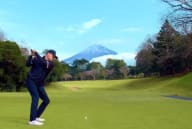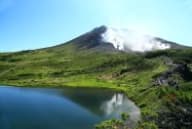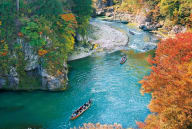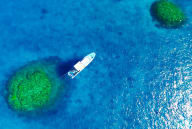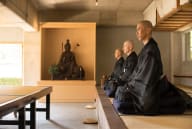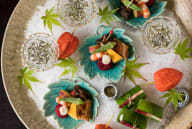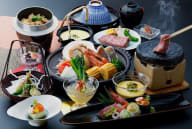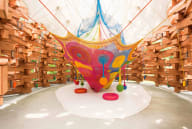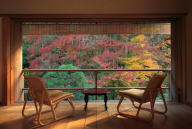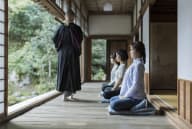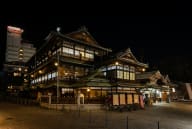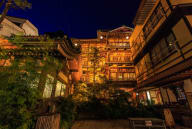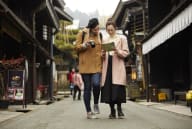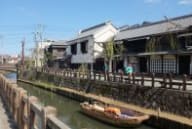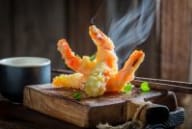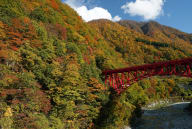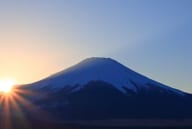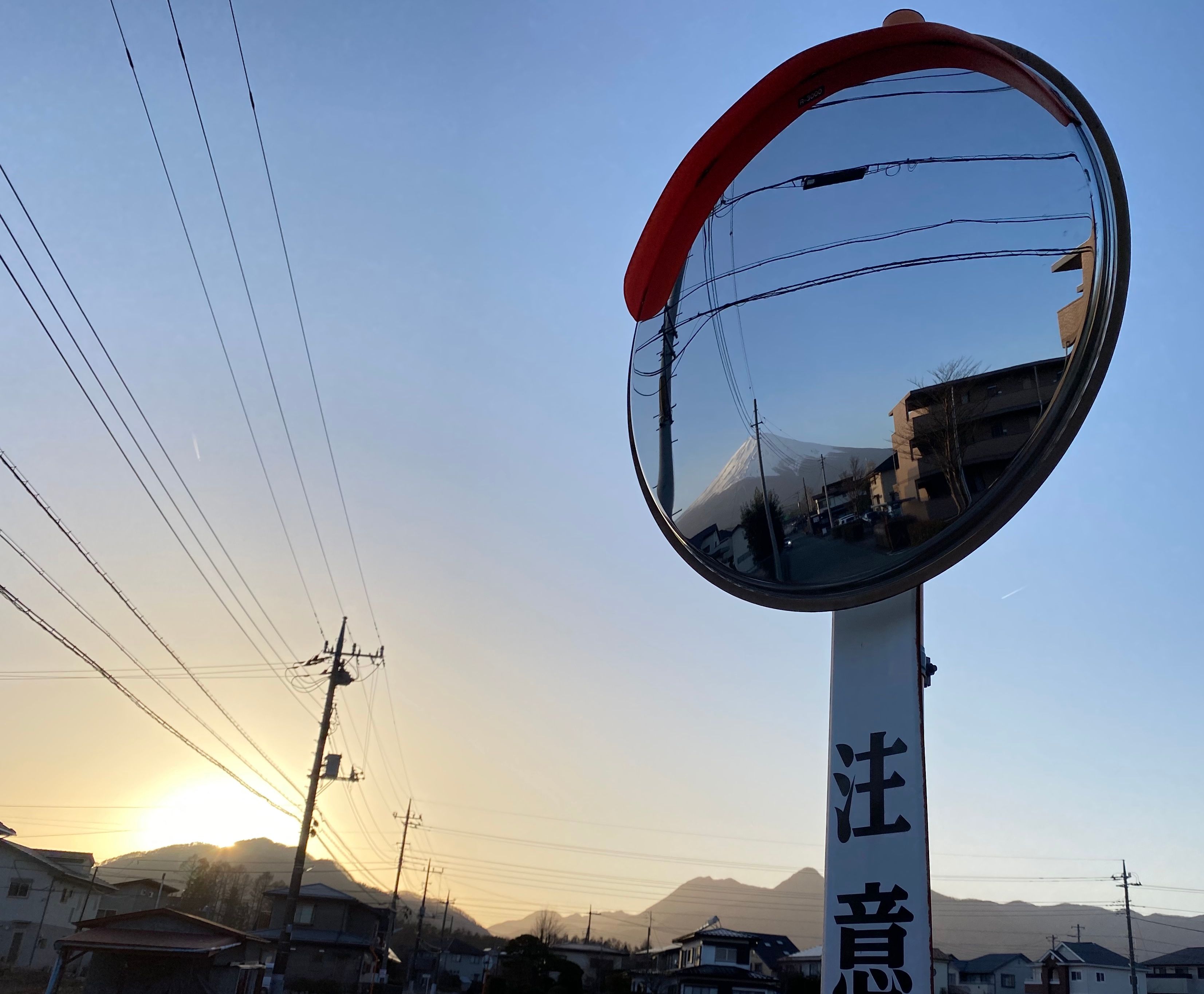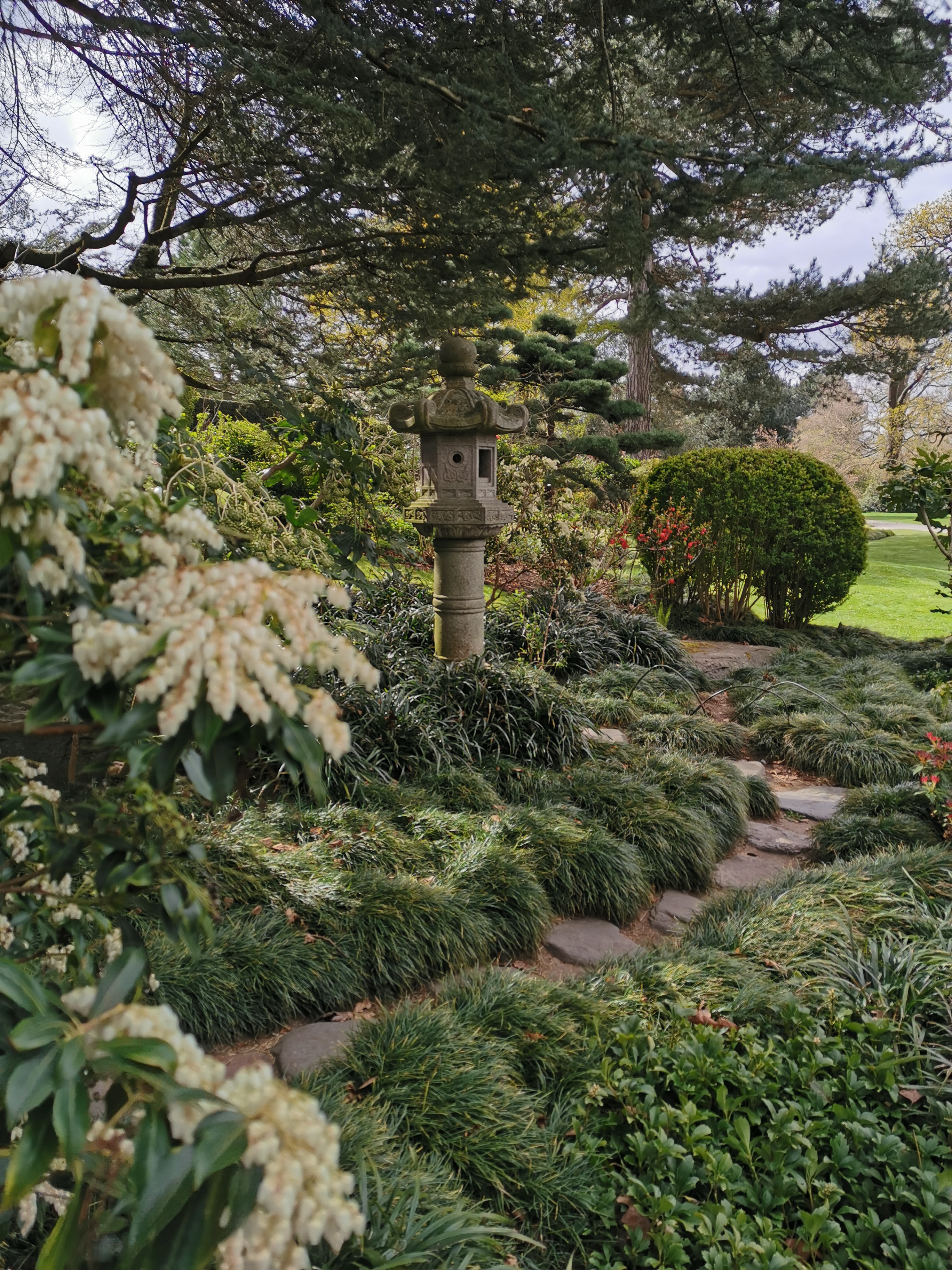
Shinto shrines are some of the most popular attractions in all of Japan. Dotted all over the country, it is estimated that there are around 80,000 shrines across the country, and that’s not even counting the temples (around 77,000). If you ever visit Japan, you’ll most likely visit a shrine, let’s take a dive into shrines and what it is like to visit them!
About Shrines
Since shrines and temples are so prominent in Japan, just by wandering around a big city, you’ll most likely run into one without even thinking about them. Nevertheless, some of the biggest attractions of the country such as Meiji Jingu, Itsukushima Shrine, and Fushimi Inari Taisha are all shrines. Meiji Jingu is located right in the middle of Tokyo, when you walk around the grounds it may not even feel like you are in one of the biggest cities in the world. Located right next to the famous Harajuku and Takeshita Dori street, it is a peaceful retreat surrounded by large trees. Itsukushima Shrine in Hiroshima is symbolised by its famous floating torii, set out in the sea that looks like it's floating in the water when the tide is in. Lastly, Fushimi Inari Taisha in Kyoto is famous for its thousands and thousands of torii gates.

However, outside of these massive shrines, there are smaller ones that have just as much charm. Some are hidden in groves of trees off the sides of roads, and some you’ll need to trek through the mountains to reach, but they are all worth visiting.
What Makes a Shrine
When visiting a shrine, you’ll run into a few common sights, architecture, and other buildings and statues that all look rather similar. On your approach to any shrine you’ll pass under what is called a torii, or a large gate, that are usually red coloured, but you can find different coloured ones at different shrines (check out our article on torii gates here to learn more). Once you are through the gate, you’ll see statues of dogs, known as ‘komainu’, that are placed in order to ward off evil. Traditionally shaped as dogs, you may notice that some shrines have them as foxes, or even monkeys, depending on the enshrined deities.

You may also see various ropes and pieces of paper tied around rocks or trees, the rope is known as a shimenawa, and is tied around something to signify that it is sacred or that a ‘kami’ lives inside it. Shimenawa can be massive, the one at Izumo Taisha in Shimane Prefecture is 13.5 metres long. Wandering around the grounds you’ll also notice what is called a ‘juyosho’, where you go after completing your wishes to receive various shrine goods. The ‘honden’ building in a shrine is where the deity is enshrined, and the ‘haiden’ is usually in front of it, acting as a place of worship. You can usually identify them through their distinct architecture, with gabled roofs and crossing beams. There are multiple types of shrine architecture, such as Shinmei-zukuri, but we’ll save them for another time! While approaching the haiden and honden, this is usually where you will complete your wishes, as there is a small offering box, called a ‘saisen-bako’, where you traditionally deposit a few yen.

Visiting a Shrine
When performing a shrine visit, or ‘omairi’, there are few steps and rules to follow, but once you’ve gone through the process once, you’ll be just fine for all the following visits. The first step is to find a shrine that you want to visit. Certain shrines have different deities enshrined, and some of them are known for helping with your studies, while others are known for helping with a prosperous harvest. Once your shrine is decided, you begin your visit by performing a small bow in front of its torii gate. Make sure to walk on either the left or the right of the path, as the centre is reserved for the kami. As you approach the worship hall, make sure to stop at a small area that may look like a fountain. Known as the ‘temizuya’, this is where you ‘purify’ yourself before making your wishes. There are usually a couple of ladles, or ‘hishaku’, that you use to dip and take out water.

The process for purification is to take the ladle with your right hand and pour water over your left. Then you take the ladle with your left hand and pour water over your right hand. Once more you take the ladle in your right hand and pour water into your left, however this time you are supposed to put the water to your lips (in order to purify your mouth), however most people do not drink the water. Lastly, you pour a bit more water back onto your left hand, then hold the hishaku vertical so the remaining water pours over the ladle. Now that you are ‘purified’, you can approach the haiden and complete your visit. Come up to the saisen-bako, and toss in a 5-yen coin if you have one. Other denominations work as offerings, but the 5 yen is the most commonly used, as ‘5 yen’ in Japanese sounds like the word ‘relationship’ (go-en). Once the coins clatter in, you gently ring the bell that is hanging near the box. This is to let the kami know that someone is there and to listen to your wishes.

Once the bell is rung, make sure to bow twice, followed by two claps. Keep your hand together and then you can make your wish! Make sure to perform one more bow after making your wish, and then you’re all done, and can now go and get some shrine goods and souvenirs. The very last step of your visit, once you’ve crossed through the torii gate again on your way out, is to look back toward the shrine and give one more bow.
Shrine Goods
Shrines have a plethora of goods that you can get from the ‘juyosho’ once you’ve completed your visit. Omikuji, or fortune slips, are some of the most popular goods that you can get at a shrine. Coming in all shapes and sizes, you usually deposit 100-300 yen to receive one. Some come with little adornments, while others are just simple paper. The fortunes on them vary from extremely good luck, to extremely bad luck, meaning that there are a lot of potential options you may get. When you open the fortune, it will tell you multiple things about various life topics, from relationships to studies to health. If you get one with good luck, then you can take it home! But if you receive an omikuji with bad luck, it is suggested to tie the fortune up on a dedicated board, which should be quite noticeable as that is where lots and lots of paper will be.

Ema are another beautiful good that you can get from a shrine. They are votive tablets that you can write a wish on and leave hanging at a board at the shrine. They are beautifully designed, most commonly of wood, and having motifs of either the shrine, enshrined deity, or local area. Around the time of the lunar new year, you’ll even find ema with designs and drawings of the yearly animal.
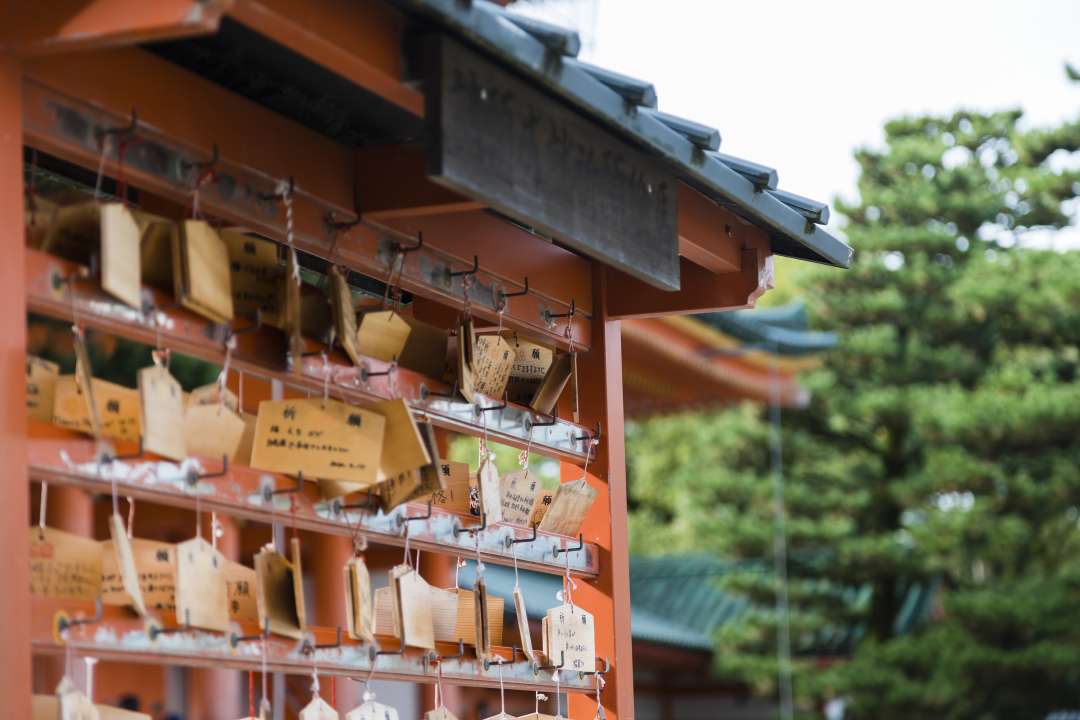
Omamori might rival omikuji as some of the most popular shrine goods that you can get. They are small handheld good luck charms that you usually attach to your backpack, purse, or put in your wallet. The variety is almost never ending, depending on the shrine that you go to you may find an omamori that you haven’t seen anywhere else. Common omamoris include ones for passing exams (gokaku), good health (kenko), good luck (kaiun), happiness (shiawase), and traffic safety (kotsu anzen). An omamori usually has the name of the shrine, the name of the charm, and a unique design on it. Some other unique omamoris you may run into on your shrine travels include good skin, mountain climbing, pet protection, travel, sports, spirit, and many more!
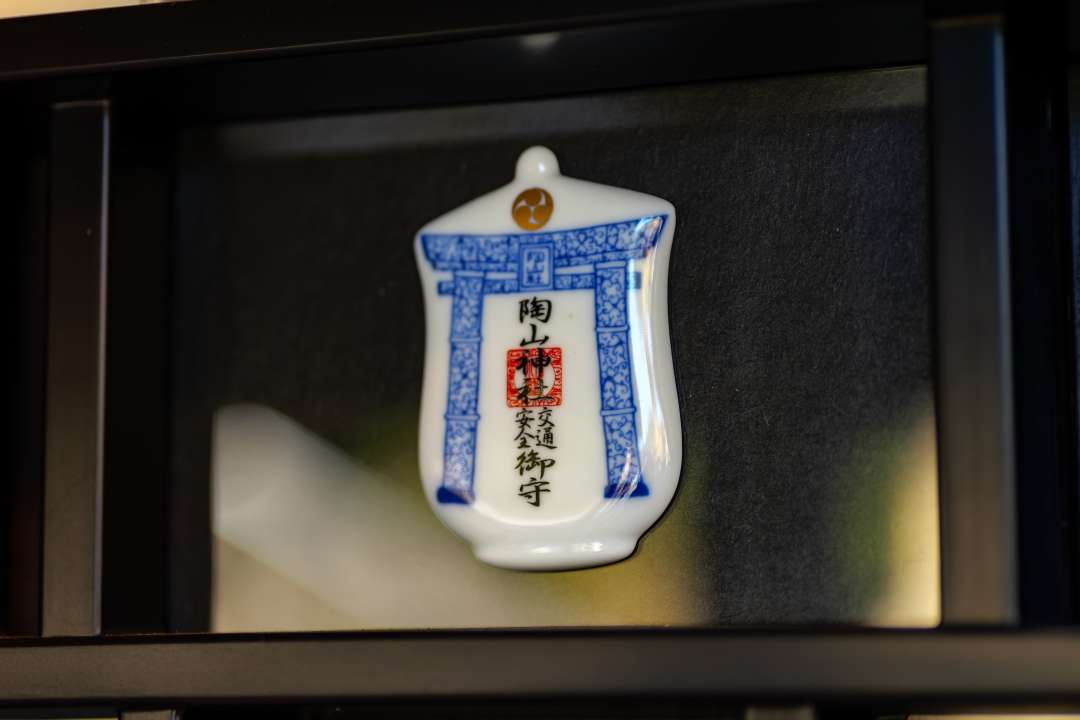
Lastly, ‘goshuin’ are red seals that you receive from a shrine office to signify a visit, collected in a stamp book that is called a ‘goshuincho’. Goshuin are similar to other shrine goods in that they are unique to each shrine. Usually they are hand written, giving you the opportunity to watch shrine workers write beautiful calligraphy right in front of you. The name of the shrine, seal, date, and other information is usually included when getting the goshuin. Seasonal updates are also quite common, in summer you may receive one with floral motifs, in winter you may get ones with snow. Goshuincho are also very stylish, with eye-catching designs of the local area, shrine architecture, or sometimes even a mythological story that the kami was involved in. As every goshuincho is different, collecting different stampbooks from different shrines becomes a wonderfully fun activity!
Since we’ve just done a deep dive on shinto shrines, here’s a few charming shrines that you can visit during your trip to Japan:
Kabushima Shrine - Located in Hachinohe, Aomori Prefecture, this shrine sees thousands of black tailed gulls flying around the area during the year. Also set right on the sea, the shrine gives wonderful views of the Pacific Ocean.

Oarai Isosaki Shrine - Found in Ibaraki Prefecture, this shrine features a torii gate set right in the ocean. Watching the sun rise over the torii as the water and waves crash over the gate make for a stunning sight!
Shiogama Shrine - Located just outside the capital of Miyagi Prefecture, this shrine set upon a hill gives some great views of the famous Matsushima and Matsushima Bay.
Aoshima Shrine - Right off the coast of Miyazaki Prefecture, Aoshima Shrine is found on a nearly tropical island, while wandering through the trees you’ll feel like you’ve been transported to a different world.

To stay up to date with all the latest happenings in Japan follow us on Facebook or Instagram!















